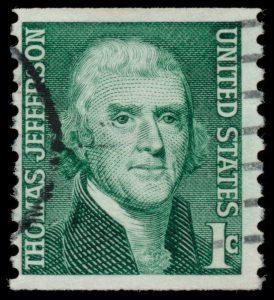Ahh, the Fourth of July … smack in the middle of summer.
A time when kids revel (swimming! sparklers! baseball! vacations!) and even the most dedicated adults slow down for just a bit. We fire up the grill, spend time with family and friends and hopefully reflect on how fortunate we are.
Many of us call the holiday “Independence Day,” in honor of one of the greatest documents ever written: the Declaration of Independence. On June 11, 1776, Thomas Jefferson was charged with drafting the document that stated the reasons the 13 American colonies wanted to be free of Great Britain’s government. After much input and many changes, on July 4, 1776, the Declaration of Independence was approved.
And so, to celebrate Independence Day, The Brief Lab presents four surprising facts about our Declaration of Independence:
1) The Founding Fathers knew the value of ruthless redaction. After Thomas Jefferson wrote his first draft of the Declaration of Independence, the other members of the Continental Congress made 86 changes to Jefferson’s draft, including shortening the overall length by more than 25%!
2) The Founding Fathers also obviously loved a good outline. In fact, the Declaration of Independence is divided into three basic parts:
a) An introduction with a statement of the philosophy.
b) A list of grievances (complaints).
c) A final and formal “Declaration of Independence.”
 3) Brevity was “in,” even in 1776. Thomas Jefferson was chosen to draft the Declaration of Independence because his excellent communication skills and directness were appreciated. In 1822, John Adams explained:
3) Brevity was “in,” even in 1776. Thomas Jefferson was chosen to draft the Declaration of Independence because his excellent communication skills and directness were appreciated. In 1822, John Adams explained:
“Mr. Jefferson came into Congress in June, 1775, and brought with him a reputation for literature, science, and a happy talent of composition. … Though a silent member in Congress, he was so prompt, frank, explicit, and decisive upon committees and in conversation that he soon seized upon my heart; and upon this occasion I gave him my vote.”
4) The Fourth of July didn’t become a holiday until much later. Congress established Independence Day as a holiday in 1870, and in 1938 Congress reaffirmed it as a paid holiday for federal employees.
In a few days, many of us will join together to celebrate this summer holiday with parades, fireworks, and picnics. We owe our Founding Fathers a debt of gratitude, not only for a paid holiday, but for the foresight to compose the Declaration of Independence — an incredible and brief work of writing!
All of us at The Brief Lab plan to make the most of Independence Day by spending time with family and friends. We hope you will too!
Happy Fourth of July!